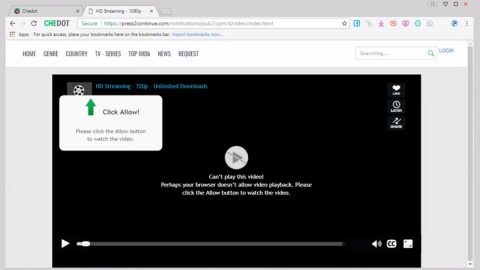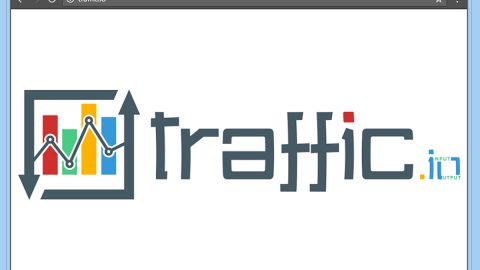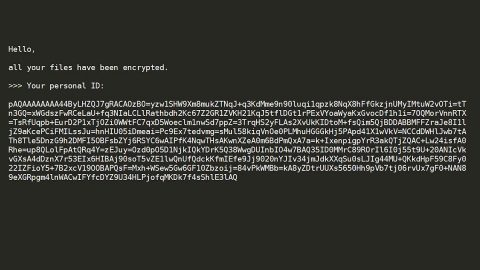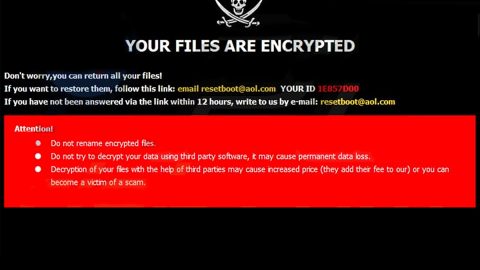What is GusLocker ransomware? And how does it implement its attack?
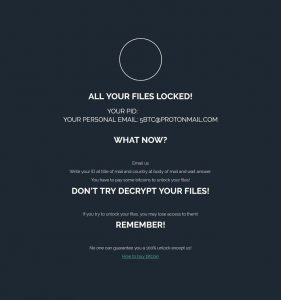
GusLocker ransomware is yet another file-GusLockerypting virus discovered on October 24, 2018. This new crypto-malware is operated by attackers who control the [email protected] email account and at the time of writing still remains unknown. The instant it drops its malicious file in the system, it marks the implementation of its attack. This malicious file can be identified with the following hash:
5B58CCBB150683D0608C236F242ABC90
The malicious file is placed in the following system folder:
C:\Users\TheJustGus\source\repos\GUScryptolockerupdate\Release\locker.pdb
After it drops the file, GusLocker ransomware performs a series of malicious activities in the system such as creating mutexes, modifying critical Windows system files, launching or repressing system processes, interfering with the Command Prompt, and the Task Scheduler. In addition, it also makes adjustments in the Windows Registry so that it can automatically run on every system startup. Following all these changes, it starts the GusLockeryption using a sophisticated GusLockeryption algorithm which is currently unknown although it may use AES or RSA ciphers.
GusLocker ransomware targets files with the following extensions:
.PNG .PSD .PSPIMAGE .TGA .THM .TIF .TIFF .YUV .AI .EPS .PS .SVG .INDD .PCT .PDF .XLR .XLS .XLSX .ACCDB .DB .DBF .MDB .PDB .SQL .APK .APP .BAT .CGI .COM .EXE .GADGET .JAR .PIF .WSF .DEM .GAM .NES .ROM .SAV CAD Files .DWG .DXF GIS Files .GPX .KML .KMZ .ASP .ASPX .CER .CFM .CSR .CSS .HTM .HTML .JS .JSP .PHP .RSS .XHTML. DOC .DOCX .LOG .MSG .ODT .PAGES .RTF .TEX .TXT .WPD .WPS .CSV .DAT .GED .KEY .KEYCHAIN .PPS .PPT .PPTX .INI .PRF Encoded Files .HQX .MIM .UUE .7Z .CBR .DEB .GZ .PKG .RAR .RPM .SITX .TAR.GZ .ZIP .ZIPX .BIN .CUE .DMG .ISO .MDF .TOAST .VCD SDF .TAR .TAX2014 .TAX2015 .VCF .XML Audio Files .AIF .IFF .M3U .M4A .MID .MP3 .MPA .WAV .WMA Video Files .3G2 .3GP .ASF .AVI .FLV .M4V .MOV .MP4 .MPG .RM .SRT .SWF .VOB .WMV 3D .3DM .3DS .MAX .OBJ R.BMP .DDS .GIF .JPG .CRX .PLUGIN .FNT .FON .OTF .TTF .CAB .CPL .CUR .DESKTHEMEPACK .DLL .DMP .DRV .ICNS .ICO .LNK .SYS .CFG
After data GusLockeryption, GusLocker ransomware drops a file named “ALL YOUR FILES LOCKED!.html” which contains the following message:
“ALL YOUR FILES LOCKED!
YOUR PID:{custom id}
YOUR PERSONAL EMAIL:
[email protected]
WHAT NOW?
Email us
Write your ID at the title of mail and country at the body of the mail and wait for an answer.
You have to pay some bitcoins to unlock your files!
DON’T TRY TO DECRYPT YOUR FILES!
If you try to unlock your files. you may lose access to them!
REMEMBER!
No one can guarantee you a 100% unlock except us!
How to buy bitcoin”
How does GusLocker ransomware circulate the web?
GusLocker ransomware circulates the web using several methods but it mostly uses spam emails. These emails contain a corrupted attachment that is usually disguised as legitimate emails even though they’re far from being one. They may be in the form of invoices, receipts, account retrieval forms, bank statements, and many more. To avoid cyber threats like GusLocker ransomware, you need to be more cautious in what you download online and make sure that you scan the downloaded file before you open it.
To delete GusLocker ransomware, refer to the removal guide provided below.
Step_1: Launch the Task Manager by simply tapping Ctrl + Shift + Esc keys on your keyboard.
Step_2: Under the Task Manager, go to the Processes tab and look for any suspicious-looking process which takes up most of your CPU’s resources and is most likely related to GusLocker ransomware.
Step_3: After that, close the Task Manager.
Step_4: Tap Win + R, type in appwiz.cpl and click OK or tap Enter to open Control Panel’s list of installed programs.
Step_5: Under the list of installed programs, look for GusLocker ransomware or anything similar, and then uninstall it.
Step_6: Next, close the Control Panel and tap Win + E keys to launch File Explorer.
Step_7: Navigate to the following locations below and look for GusLocker ransomware’s malicious components such as [random].exe, ALL YOUR FILES LOCKED!.html, and other suspicious files, then delete all of them.
- %TEMP%
- %WINDIR%\System32\Tasks
- %APPDATA%\Microsoft\Windows\Templates\
- %USERPROFILE%\Downloads
- %USERPROFILE%\Desktop
Step_8: Close the File Explorer.
Before you proceed to the next steps below, make sure that you are tech-savvy enough to the point where you know exactly how to use and navigate your computer’s Registry. Keep in mind that any changes you make will highly impact your computer. To save you trouble and time, you can just use Restoro, this system tool is proven to be safe and excellent enough that hackers won’t be able to hack into it. But if you can manage Windows Registry well, then by all means go on to the next steps.
Step_9: Tap Win + R to open Run and then type in Regedit in the field and tap enter to pull up Windows Registry.
Step_10: Navigate to the following path:
- HKEY_CURRENT_USER\Control Panel\Desktop\
- HKEY_USERS\.DEFAULT\Control Panel\Desktop\
- HKEY_LOCAL_MACHINE\Software\Microsoft\Windows\CurrentVersion\Run
- HKEY_CURRENT_USER\Software\Microsoft\Windows\CurrentVersion\Run
- HKEY_LOCAL_MACHINE\Software\Microsoft\Windows\CurrentVersion\RunOnce
- HKEY_CURRENT_USER\Software\Microsoft\Windows\CurrentVersion\RunOnce
Step_11: Delete the registry keys and sub-keys created by GusLocker ransomware.
Step_12: Close the Registry Editor and empty the Recycle Bin.
Try to recover your GusLockerypted files using the Shadow Volume copies
Restoring your GusLockerypted files using Windows Previous Versions feature will only be effective if GusLocker ransomware hasn’t deleted the shadow copies of your files. But still, this is one of the best and free methods there is, so it’s definitely worth a shot.
To restore the GusLockerypted file, right-click on it and select Properties, a new window will pop up, then proceed to Previous Versions. It will load the file’s previous version before it was modified. After it loads, select any of the previous versions displayed on the list like the one in the illustration below. And then click the Restore button.
Congratulations, you have just removed GusLocker Ransomware in Windows 10 all by yourself. If you would like to read more helpful articles and tips about various software and hardware visit fixmypcfree.com daily.
Now that’s how you remove GusLocker Ransomware in Windows 10 on a computer. On the other hand, if your computer is going through some system-related issues that have to get fixed, there is a one-click solution known as Restoro you could check out to resolve them.
This program is a useful tool that could repair corrupted registries and optimize your PC’s overall performance. Aside from that, it also cleans out your computer for any junk or corrupted files that help you eliminate any unwanted files from your system. This is basically a solution that’s within your grasp with just a click. It’s easy to use as it is user-friendly. For a complete set of instructions in downloading and using it, refer to the steps below
Perform a full system scan using Restoro. To do so, follow the instructions below.




